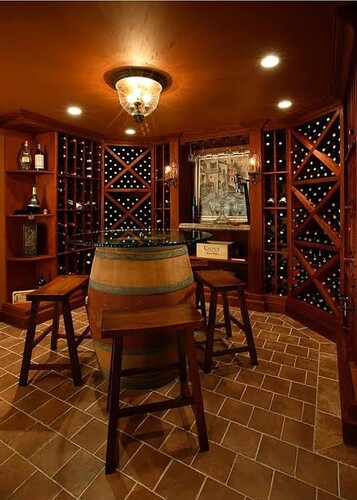For many homeowners, entertaining guests and enjoying fine beverages at home is a source of pride. One renovation trend that elevates both lifestyle and property value is the addition of a wine cellar or beverage storage room. Once considered a luxury reserved for large estates, modern design and technology have made wine storage accessible in homes of all sizes.
Why Add a Wine Cellar?
Wine cellars serve both functional and aesthetic purposes. Functionally, they preserve wine under ideal conditions—stable temperature, proper humidity, and limited light exposure. This ensures that wines age properly and maintain their flavor. Aesthetically, they add a sense of sophistication and make entertaining more memorable. Even for those who don’t drink wine, a beverage storage room can be adapted for craft beer, whiskey collections, or non-alcoholic beverages.
Types of Wine Cellars
Wine cellars come in different designs depending on available space and budget. A traditional basement cellar takes advantage of naturally cooler underground temperatures. For homes without basements, a climate-controlled room can be built using specialized cooling systems and insulation. Smaller homes may opt for wine closets or under-stair storage units, which maximize space while still offering a stylish display.
Design and Materials
A well-designed wine cellar balances function and beauty. Wooden racks, often made of mahogany or redwood, are traditional choices due to their durability and resistance to moisture. Modern designs may incorporate metal racks, glass walls, or LED lighting for a sleek and contemporary look. Flooring should be chosen carefully; stone and tile are preferred since they help maintain cool temperatures and resist moisture.
Temperature and Humidity Control
The key to a proper wine cellar is climate control. Ideal storage requires temperatures between 55–60°F (13–16°C) and humidity levels around 60–70%. Specialized cooling units and humidifiers ensure these conditions remain stable year-round. Without this, wines may age prematurely or lose their intended taste profile.
Beverage Storage Alternatives
Not every homeowner needs a dedicated wine cellar. Beverage storage rooms can be tailored for other collections. For instance, beer enthusiasts may design refrigerated storage with shelving for bottles and kegs. Coffee lovers might create a space for beans, grinders, and brewing equipment. These rooms can double as stylish bars, making them multifunctional spaces for entertainment.
Costs and Value
The cost of building a wine cellar varies widely. A simple under-stair installation might cost only a few thousand dollars, while a full-scale, climate-controlled cellar could be a significant investment. However, the resale value often justifies the cost, as many buyers see a wine cellar as a luxury feature that sets a home apart.
Final Thoughts
Wine cellars and beverage storage rooms are more than just renovations—they’re lifestyle enhancements. They bring organization, preservation, and beauty into the home while making social gatherings more enjoyable. Whether you’re a casual wine enthusiast or a serious collector, creating a space to celebrate and share your favorite beverages is a rewarding upgrade that blends practicality
with elegance.

